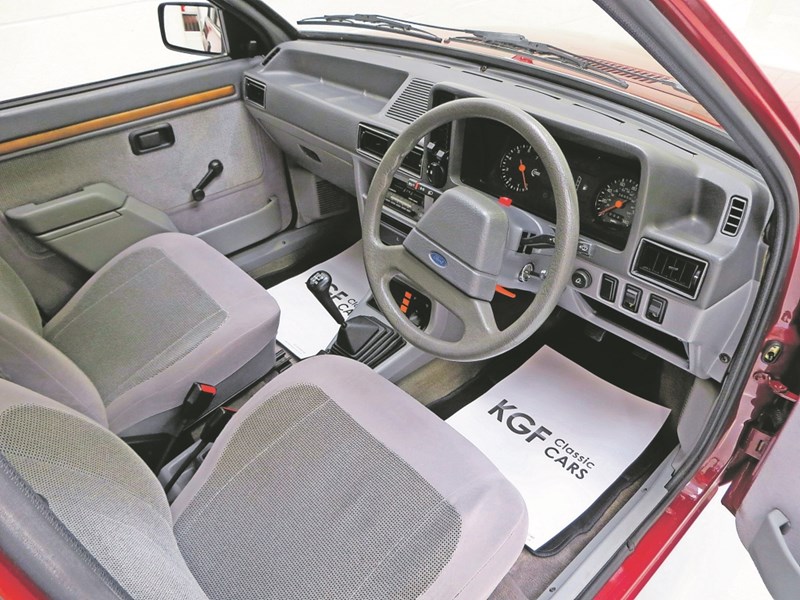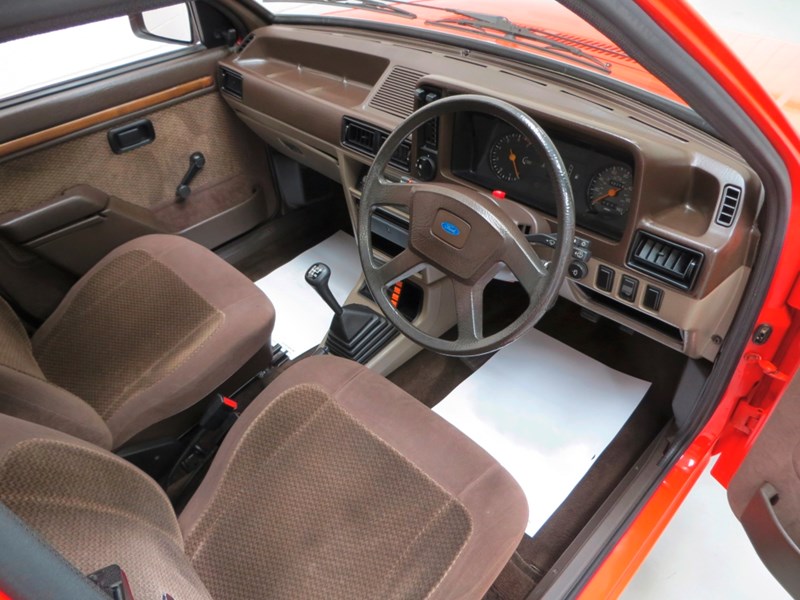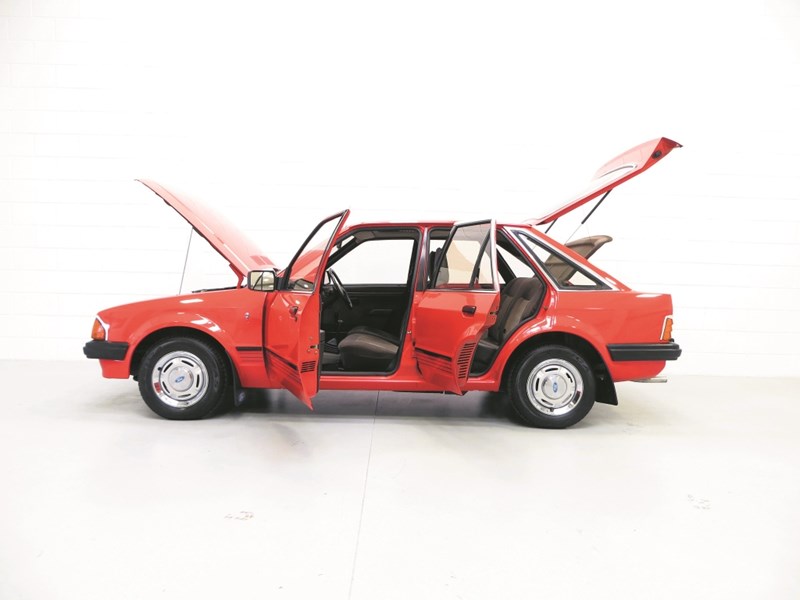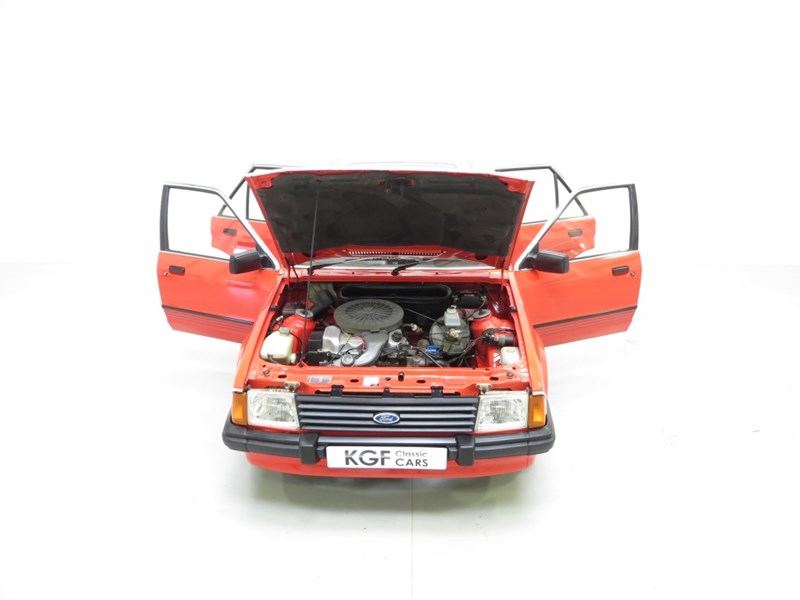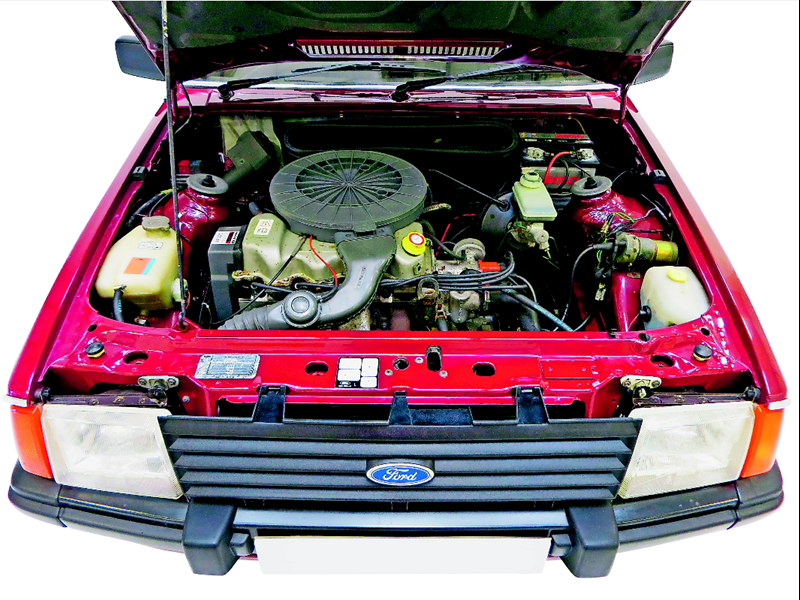The big-selling front-wheel-drive hatchback is beginning to be taken seriously by classic enthusiasts, and with good reason.
So, the Car of the Year 1981 also sold a million in Britain faster than any other vehicle – ever. You may be surprised to know the car in question was… the all-new Ford Escort MkIII. So ubiquitous was this car, people tend to forget what a great leap it made over the preceding MkII.
Introduced in 1980, the MkIII brought front-wheel drive to the Escort range along with the all-new CVH (Compound Valve Hemispherical) engine, at least on some models. It was also a hatchback, an estate,a van and a Karmann developed convertible. A saloon version was marketed separately as the Ford Orion.
We’re not reviewing the much coveted XR3/XR3i here, nor the go-faster RS: our focus is on the honest workaday 1.1, 1.3, 1.4 and 1.6 models in L, GL and Ghia form. And the briefly available Popular.
Five-speed manual and three-speed automatic gearboxes were introduced from 1982. The unyielding ride quality was much improved by suspension mods in 1983, followed by a diesel version. The MkIV Escort, with smoother lines, facelifted grille and dashboard and some mechanical tweaks, followed in 1986.
VITAL STATISTICS
ENGINE 1597cc/4-cyl/OHC
POWER 79bhp@5800rpm
TORQUE 92lb ft@3000rpm
MAXIMUM SPEED 103mph
0-60MPH 11.0sec
FUEL CONSUMPTION 30-35mpg
TRANSMISSION FWD, five-spd manual
WHAT TO LOOK FOR
BODYWORK
These cars have several well-known rot spots. Wheelarches can go (replacements are available) as can rear chassis legs and jacking points. Closely inspect the sills and tailgate too, along with the front wings. Check the areas where the MacPherson struts are mounted – rot here is expensive to rectify. More worrying is corrosion in and around the battery tray, which in the worst cases deposits acid in places it really shouldn’t be.
SUBSTANDARD STEEL
In the mid-1980s Ford decided it would be a good idea to use the cheapest steel it could find. Cars built using it (c1986-88) will probably have long rotted away, but still be careful.
THE BODY BEAUTIFUL
Always buy the best car you can afford, which will hopefully mean you can avoid rustbuckets. But there’s plenty of help at hand if you need it. Ex-Pressed Steel Panels have front scuttles at £185 and rear panels for £350. Classic Ford specialist MC Trading of Sevenoaks sell wheelarches for £17 a corner.
OIL CRISIS
Oil changes on the CVH-engined cars, ie all but the 1.1 model, must be adhered to religiously. Seek out evidence of a conscientious maintenance regime on any car you’re thinking of buying. These engines are notorious for oilway blockages and sludge can target the hydraulic camshaft lifters, damaging the cam. If the cambelt is damaged or simply not replaced on time you’ll be finding a new engine so, again, check its history.
This aside, the engine will last a long time if properly maintained. Check carefully for suspicious rattles and excessive blue smoke, both of which suggest a tired motor.
IS THE CHANGE AS GOOD AS THE REST?
Gearboxes can grow sloppy and dispense with their synchromesh, particularly on second and third gear – watch out for it on the test-drive. Also inspect for worn CV joints and split steering rack gaiters.
IT'S GOOD TO TALK
For a bit of banter with fellow owners and some real-world tips and advice, sign up to the Talk Ford online forum.
KEEPING IT IN TRIM
Posting a ‘wanted’ ad in Classic Car Weekly or on TalkFord is a good way to find replacement interior trim parts. Aldridge Trimming is worth knowing about too – it offers a trimmed headlining board for £243.96 and can retrim your seats using the nearest possible match to the original material.
OUR VERDICT
The MkIII has much to recommend it. Considering that, once upon a time, nobody in the UK was ever more than about 400 metres from one, they’re actually quite rare now – folk will wander over for a chat at filling stations. The MkIII’s original advertising slogan ‘Simple is efficient’ is spot-on: these are uncomplicated, easy-to-work-on cars. But perhaps the most compelling reason is the cost of buying one in the first place (see ‘What to pay’, right). Three grand for a mint example of a genuinely interesting classic you can drive every day – what’s not to like?
